Welcome to The Subtle Shift, a weekly newsletter where I share small but powerful ideas to help you lead with clarity, inspire change, and create a lasting impact. This week’s issue is about a tool I believe every leader should have in their toolkit: the Gallup StrengthsFinder. It’s a powerful way to deepen your self-awareness—and, more importantly, to tap into the unique talents that make you who you are.
The Strengths Philosophy
I’ve been a big fan of the StrengthsFinder 2.0 assessment for years. It assumes that every one of us has all 34 talent themes to varying degrees—but by paying attention to our top 5 to 10, we begin to see what it known as our talent DNA. These dominant talents shape how we think, feel, and behave—and understanding them gives us a clearer sense of what makes us tick.
But understanding is only the beginning.
To turn a talent into a strength, you have to use it. Consistently. Intentionally. Repeatedly.
That’s a shift worth making, but it requires a mindset change, which many leaders struggle with.
Why We Default to Fixing Our Flaws
Most of us grew up in systems that rewarded fixing weaknesses. What did your parents want to discuss if you got four As and one C? If you are like most people, it was probably the C.
It’s no surprise that so many of us move through our careers trying to “round ourselves out.” We obsess over the areas where we fall short. We pour time and energy into getting marginally better at things that don’t come naturally.
But working on your weaknesses is draining. It’s reactive. It pulls you away from your natural energy and into constant self-correction.
And here’s what the strengths philosophy offers instead:
Greater satisfaction and higher engagement come from knowing that you don’t have to be great at everything.
You just have to know what you’re great at—and lean into it.
How to Develop Your Strengths
Here’s a key insight that can help you develop your strengths using the Gallup StrengthsFinder assessment:
Talents = potential. Strengths = performance.
You were born with raw capabilities. But they only become true strengths when you invest in them and put them to work.
That investment might look like this:
- Finding roles and projects where your top talents are needed.
- Partnering with others who complement your blind spots.
- Practicing and refining your natural patterns until they become powerful tools.
This is the real value of StrengthsFinder. Not just identifying your talents but also helping you put them to work.
Why This Matters for Teams and Leaders
The strength-based worldview is rooted in something significant: the belief that we were each given unique talents—not to compete but to contribute.
Your strengths are meant to work in harmony with others’ strengths.
When you operate this way, you stop trying to be everything—and start being more of who you already are. That’s when energy flows and impact grows.
And for teams?
The best teams are never made up of well-rounded individuals. They’re composed of complementary individuals who know their strengths and lean on each other accordingly.
Putting Your Strengths to Work
If you’ve taken the StrengthsFinder assessment, revisit your top 5. If you haven’t, this is your invitation to start. You can take the assessment on your own by visiting the StrengthsFinder website.
Then ask yourself:
- Am I using these talents daily?
- Am I building them into true strengths?
- Or am I defaulting to fixing what I think is “wrong” with me?
Because the truth is—your most significant contribution isn’t found in what you lack.
It’s found in what you already have.
So this week, make the subtle shift.
Go discover your strengths, and then put those strengths to work.
And if you want help, reach out to me for 1:1 coaching. The StrengthsFinder tool is just one of many that I use with my clients.

